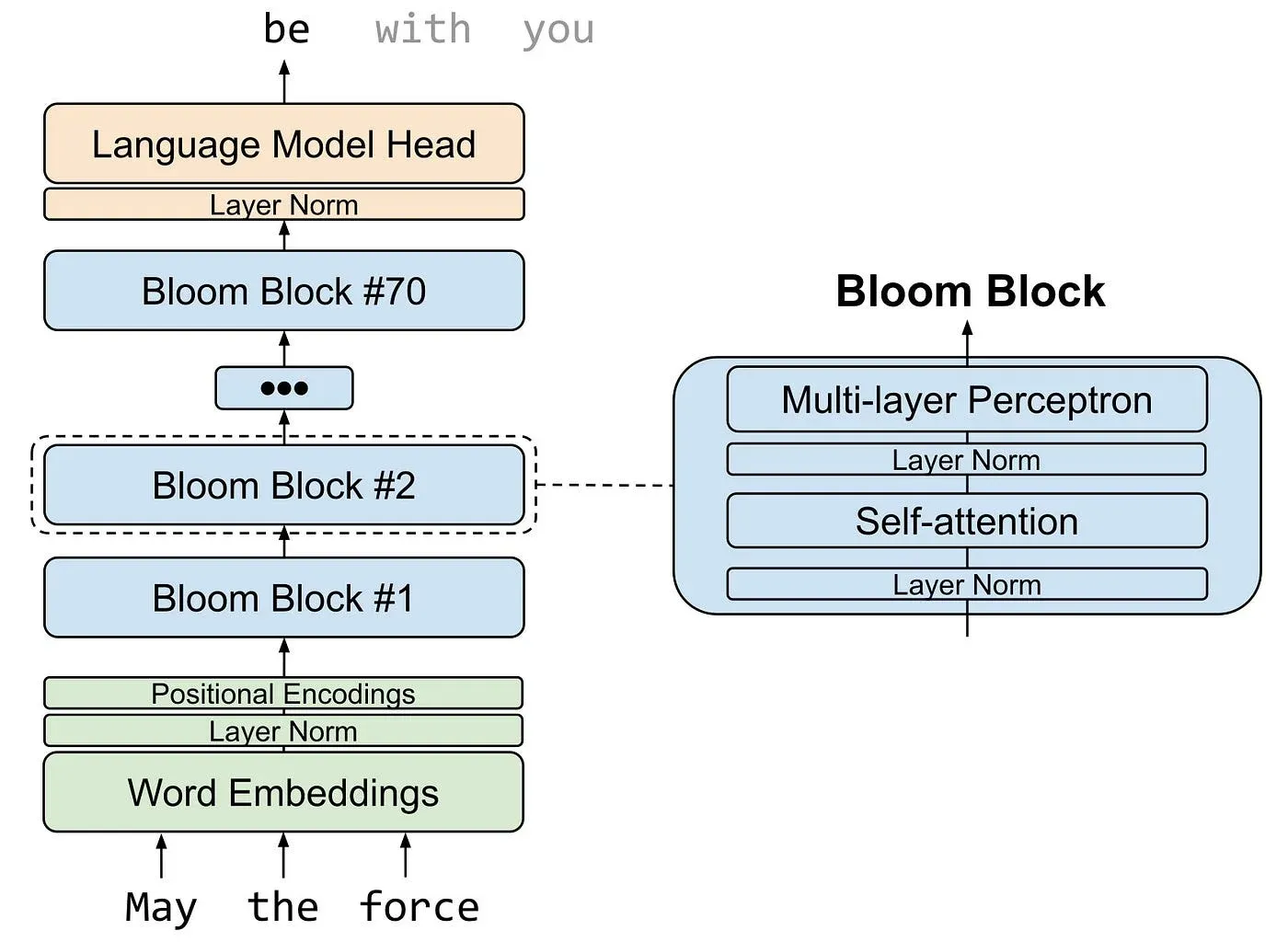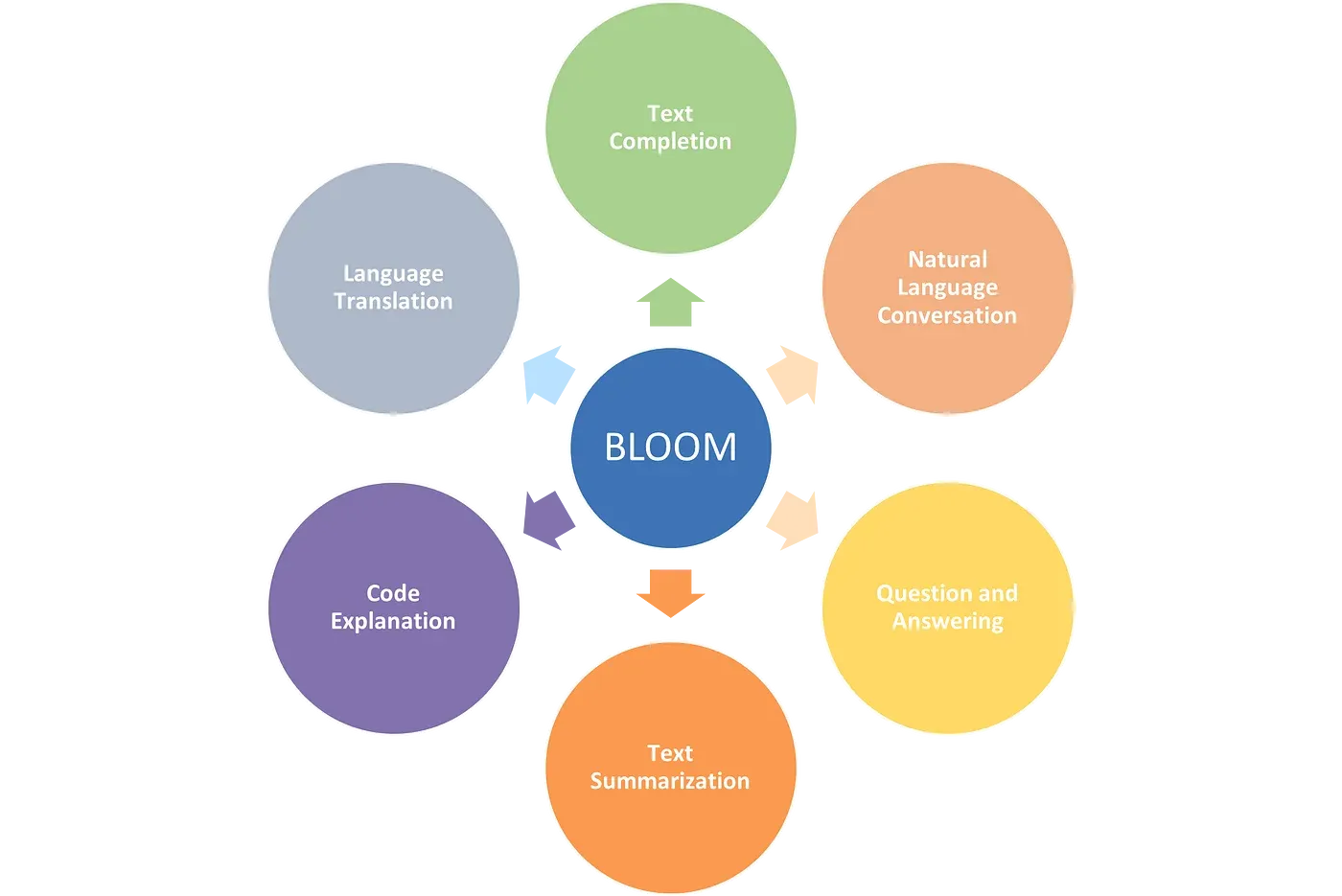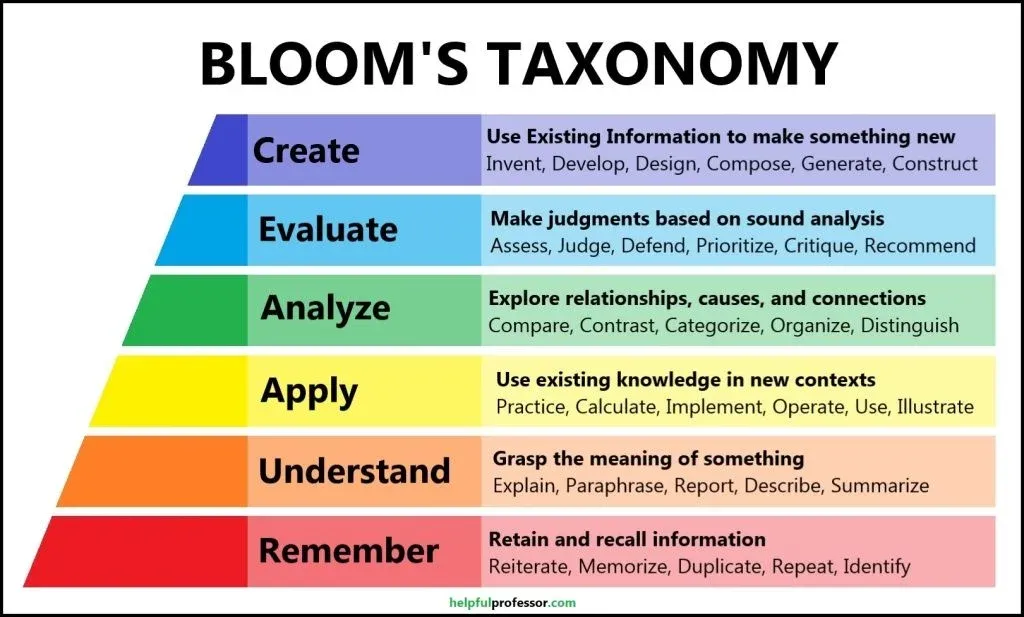Artificial intelligence quietly shapes our world in profound ways.
Understanding this groundbreaking technology matters, yet making sense of complex capabilities feels daunting.
That's why this post cuts through the showcase of 10 down-to-earth applications of AI's new Bloom model.
From real-life examples enhancing education to empowering those with disabilities, thought-provoking uses come to light.
You'll discover how this technology can protect the environment, transform creative industries, and improve healthcare in terms that anyone can grasp.
The focused, compact overview highlights key abilities of the model driving advancements across industries.
However, as promising applications are covered, ethical concerns and access limitations arise which society must address.
This post aims to advance public understanding of AI innovation shaping the future. If you want a concise, engaging look at how one cutting-edge model is changing the world, read on.
The breadth of potential will inspire while raising crucial questions around responsible development requiring collective wisdom.

1. Education
With the advancements in artificial intelligence and natural language processing, the Bloom Large Language Model has emerged as a powerful tool in education.
This innovative technology changes how we learn and teach, enabling personalized and interactive learning experiences.
Let's delve into some of the top use cases of the Bloom Large Language Model in education.
Adaptive Learning
The Bloom Model enables personalized and adaptive learning by analyzing data to identify learning styles, preferences, and gaps.
It then generates tailored content and learning paths to ensure students receive the most relevant instruction.
Virtual Tutors
The model can be a 24/7 virtual tutor by leveraging natural language understanding to answer questions, explain concepts, and provide assignment feedback.
This enhances the learning experience by allowing students to receive immediate assistance.
Language Learning
Using its vast linguistic knowledge, the Bloom Model can generate contextual examples, practice exercises, and interactive lessons to facilitate immersive language learning.
This helps students improve their reading, writing, speaking, and listening skills in a more natural and effective way.
2. Creative Writing and Content Generation

The Bloom Large Language Model transforms the creative industry by assisting writers, marketers, and content creators. It can help with content generation, copywriting, and creative idea generation.
Content Generation
The model can efficiently generate high-quality articles, blog posts, and product descriptions based on topics and keywords.
This saves time for content creators while ensuring engaging content for audiences.
Copywriting Assistance
The model can help copywriters craft persuasive, attention-grabbing copy by providing suggestions, generating ideas, and analyzing words' emotional impacts. This helps optimize content effectiveness.
Creative Idea Generation
At the heart of creativity, the model provides inspiration and new angles and helps overcome writer's block. Analyzing a vast range of works, can spark imagination and help produce unique, impactful content.
3. Research and Knowledge Discovery
Artificial intelligence has the potential to revolutionize how researchers discover and explore knowledge.
Large language models like Bloom offer exciting use cases in research through their vast knowledge and language abilities.
Literature Review Simplified
Bloom can analyze vast amounts of papers, articles, and books to provide concise summaries and key findings, saving researchers time and enabling them to focus on the most relevant information.
References Made Easy
The model can assist in correctly citing and referencing sources by analyzing context and content to ensure research integrity while saving researchers from formatting references.
Ideas and Hypotheses Advanced
Bloom can help generate novel ideas by identifying gaps in existing research and provide relevant data and analyses to make the research process more efficient and effective. It can assist in hypothesis testing through statistical analysis.
Suggested Reading:
4. Accessibility and Assistive Technology
The Bloom Large Language Model has the potential to enhance accessibility and assistive technology for individuals with disabilities greatly.
Using its powerful language processing abilities, the model offers several use cases that can improve quality of life.
Text-to-Speech Conversion
The model can convert written text into natural-sounding speech, allowing visually impaired users to access written content more easily. This is particularly helpful for educational materials, books, and online articles.
Speech Recognition and Transcription
It can also assist those with speech impairments by accurately recognizing and transcribing speech into text. This ensures effective communication through written channels.
Language Assistance and Learning Support
For those with learning disabilities or learning a new language, the model provides valuable language assistance and learning support.
It can adapt content, explain concepts, and offer personalized guidance to support language learning and understanding.
5. Customer Service and Chatbots

The Bloom Large Language Model revolutionizes how companies deliver customer service through its powerful natural language understanding capabilities.
From chatbots to virtual assistants, this technology enables new and improved use cases in customer support.
Chatbot Integration
Chatbots powered by the Bloom model can efficiently handle common customer queries through personalized responses.
They assist users by troubleshooting issues and guiding them through processes, ensuring seamless experiences while reducing agent workloads.
Natural Language Understanding
The model's advanced processing allows chatbots to comprehend messages in a more human-like way.
They can interpret context, intent, and sentiment to offer relevant, customized solutions for enhanced satisfaction.
24/7 Support
With always-on chatbots, the Bloom Large Language Model facilitates round-the-clock customer service.
This availability improves satisfaction and wait times while letting companies provide timely help even when agents are unavailable.
Now, if you want to begin with chatbots but have no clue about how to use language models to train your chatbot, then check out the NO-CODE chatbot platform, named BotPenguin.
With all the heavy work of chatbot development already done for you, BotPenguin allows users to integrate some of the prominent language models like GPT 4, Google PaLM, and Anthropic Claude to create AI-powered chatbots for platforms like:
- WhatsApp Chatbot
- Facebook Chatbot
- WordPress Chatbot
- Telegram Chatbot
- Website Chatbot
- Squarespace Chatbot
- woocommerce Chatbot
- Instagram Chatbot
6. Healthcare and Medicine
The Bloom Large Language Model has the potential to revolutionize healthcare and medicine. It can offer innovative solutions to improve patient care, research, and medical knowledge.
Patient Assistance and Education
The model can serve as a virtual healthcare assistant, providing patients with accurate information about symptoms, conditions, medications, and treatments.
By offering personalized guidance and education, it empowers patients to make informed health decisions. This technology can also assist healthcare providers with up-to-date medical information.
Medical Research and Literature Analysis
Research and analysis are key to medical advances. The model can help medical researchers and practitioners analyze vast literature to identify patterns and find new insights.
By streamlining research, it helps accelerate discoveries, improve treatments, and enhance outcomes.
Clinical Decision Support
In complex cases, the model can support professionals in making informed decisions. Analyzing patient data, history, and literature, can provide evidence-based recommendations for diagnosis, treatment plans, and patient care. This reduces errors, improves accuracy, and enhances safety.
Suggested Reading:
7. Legal and Financial Services
The Bloom Large Language Model offers transformative applications across legal and financial services. With its powerful natural language processing capabilities, this AI technology is revolutionizing how work is done.
Legal Research and Case Analysis
By analyzing vast amounts of legal texts, the model can identify relevant information, extract key insights, and provide comprehensive summaries to help attorneys more efficiently research cases and build strong legal arguments.

Contract Analysis and Review
The model can streamline the contract review process by automatically extracting key clauses, highlighting potential risks, and offering legal implications to simplify compliance checks.
Financial Analysis and Decision Support
For financial professionals, the technology enhances decision-making by processing financial data, market trends, and indicators to assist with investment analysis, risk assessment, and portfolio management.
8. Environmental and Sustainability Applications
The Bloom Large Language Model holds great potential for applications in environmental conservation and sustainability efforts.
Using its language processing capabilities, this technology can contribute to positive environmental change.
Data Analysis and Interpretation
The Bloom Large Language Model can analyze vast amounts of environmental data, such as climate change records, pollution levels, and habitat information.
By interpreting this data, the model can identify trends, assess environmental impacts, and generate insights.
This information provides a foundation for informed decision-making and the development of effective environmental conservation strategies.
Sustainable Practices and Guidelines
Incorporating sustainable practices is essential for promoting environmental conservation. The Bloom Large Language Model can assist in developing sustainability guidelines and best practices across various industries.
By analyzing industry-specific data, regulations, and scientific research, the model can generate recommendations and support businesses in adopting eco-friendly practices. This fosters environmental awareness and contributes to a more sustainable future.
Environmental Education and Awareness
The Bloom Large Language Model can be utilized to enhance environmental education and increase public awareness.
By analyzing and summarizing scientific papers, research articles, and conservation initiatives, the model can disseminate accurate and accessible information to the general public.
This facilitates understanding, promotes environmental consciousness, and empowers individuals to make environmentally conscious choices.
Suggested Reading:
9. Art and Entertainment
The Bloom Large Language Model has opened up exciting possibilities in art and entertainment. Its advanced language processing capabilities have been leveraged to enhance creativity and improve user experiences.
Content Generation and Curation
Creating engaging and high-quality art and entertainment content is essential in captivating audiences.
The Bloom Large Language Model can assist in generating and curating content across various mediums, such as writing, music, and visual arts.
By analyzing existing works, understanding user preferences, and generating new ideas, the model can support artists, writers, and other creatives in producing compelling and diverse content.
Personalized Recommendations and User Experiences
In the art and entertainment industry, personalized recommendations are crucial in catering to individual preferences and enhancing user experiences.
The Bloom Large Language Model can analyze user data, including past interactions and preferences, to provide personalized recommendations for books, movies, music, and other forms of entertainment.
This improves user satisfaction and fosters a deeper connection between consumers and creators.
Virtual Reality and Gaming
Virtual reality (VR) and gaming have seen significant advancements in recent years. The Bloom Large Language Model can contribute to enhancing these experiences further.
By processing large amounts of textual and visual data, the model can assist in creating immersive storylines, realistic characters, and dynamic gaming environments.
This technology enables developers to deliver more engaging and interactive experiences to gamers.
10. Open-source Development and Community Collaboration
Open-source development and community collaboration are integral to the growth and advancement of technology.
The Bloom Large Language Model has found valuable use cases in this area, facilitating collaboration and innovation.
Code Generation and Documentation
Developers often face challenges in writing and maintaining code documentation. The Bloom Large Language Model can streamline this process by generating code snippets, providing suggestions, and assisting in documentation.
This technology facilitates collaboration among developers and ensures consistency and clarity in codebases.
Knowledge Sharing and Technical Support
Open-source communities thrive on knowledge sharing and providing technical support to developers.
The Bloom Large Language Model can contribute to these efforts by analyzing vast amounts of technical documentation, code examples, and community forums.
It can provide accurate and relevant answers to developers' queries, enabling faster problem-solving and knowledge dissemination.
Natural Language Processing in Open-source Projects
Natural language processing (NLP) is a key area within open-source development. The Bloom Large Language Model offers advancements in NLP applications, such as sentiment analysis, language translation, and text summarization.
This technology can be integrated into various open-source projects, enhancing the efficiency and effectiveness of NLP tasks and enabling developers to create more sophisticated applications.
Conclusion
This innovative service stands poised to transform industries through its versatile AI capabilities.
Offering customized solutions that benefit businesses, researchers, creators and beyond, applications of this groundbreaking model span from education to sustainability.
While advancements invite optimism, responsible development raises crucial considerations around ethics and access.
As technology continues to progress, public understanding must keep pace. With capabilities projected to advance rapidly, now is the time to grasp its current abilities and limitations.
If you seek to leverage these AI offerings or simply understand the technology shaping the future, this post has outlined key use cases in plain terms.
Ready to enable personalized learning, streamline your workflow or receive specialized recommendations?
Reach out now to discover custom implementations of this versatile innovation that could profoundly enhance how you work and live.
Suggested Reading:
LLM Use-Cases: Top 10 Industries Using Large Language Models
Frequently Asked Questions (FAQs)
How does the Bloom Large Language Model excel in content generation?
The Bloom Large Language Model excels in content generation by understanding context, generating coherent text, and adapting its language output to suit various writing styles and purposes.
Can the Bloom Large Language Model be fine-tuned for industry-specific applications?
Yes, the model is adaptable, allowing fine-tuning for industry-specific tasks, making it versatile for applications like legal document drafting or medical report generation.
What are the key features that make the Bloom Large Language Model suitable for sentiment analysis?
The model's ability to understand nuances, context, and varying tones enables accurate sentiment analysis, making it valuable for gauging opinions and emotions in text.
How does the Bloom Large Language Model contribute to information retrieval in search engines?
The model enhances information retrieval by understanding user queries, generating relevant search results, and improving the overall effectiveness of search engine algorithms.
In what ways can businesses leverage the Bloom Large Language Model for customer support chatbots?
Businesses can enhance customer support chatbots by integrating the Bloom Large Language Model, enabling more natural and context-aware interactions for improved user experiences.


